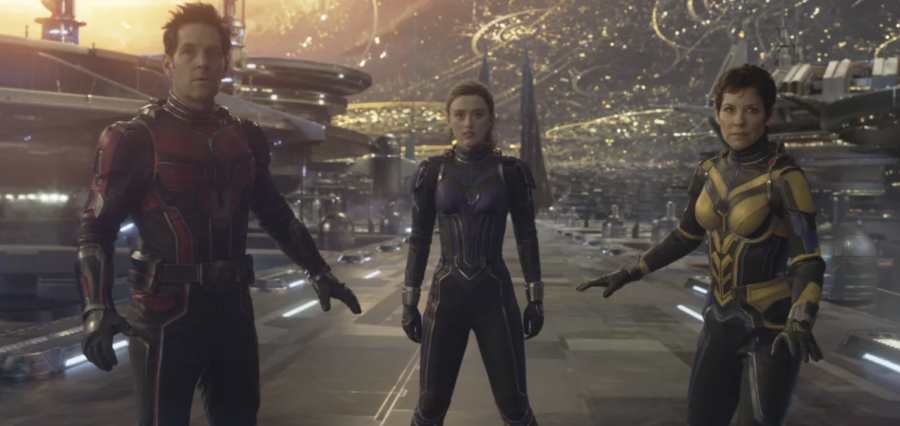‘Ant-Man: Quantumania’ kicks off Marvel’s next phase with enjoyable but predictable start
Photo Courtesy of Disney and Marvel Studios
Ant-Man feels like a standard Marvel affair but the cracks of the MCU’s formula are starting to show.
February 23, 2023
When the first “Ant-Man” film came out nearly 8 years ago, it still felt like Marvel could largely focus on telling fun, engaging stories first and focus on weaving plots into a large interconnected narrative second. Ant-Man, at the time, was a niche character and had a low-stakes story that focused on Paul Rudd’s character of Scott Lang and his antics of getting shrunken down to microscopic size. Now however, the tiny superhero has big shoes to fill with “Ant-Man and The Wasp: Quantumania” being not only the first film of Phase 5 in the MCU but also being touted by Marvel executives to be just as important as “Captain America: Civil War” was when it first came out. While the film is still relatively enjoyable, Marvel’s continued pursuit of trying to set up another “Infinity War” and “Endgame”-level event continues to get in the way of the films being able to stand alone on their own.
The film initially starts with Scott Lang living his life after becoming an Avenger, enjoying the praise he gets in his day-to-day life now for helping save the world in “Endgame” while reflecting on the time that he lost with his daughter Cassie (Kathryn Newton), his partner Hope (Evangeline Lilly) as well as her father and mother. When one of Cassie’s devices goes haywire, the group is shrunken down to microscopic size as they become trapped in the Quantum Realm and have to find a way out of the infinitesimally small new universe.
In almost every aspect, “Ant-Man” feels like a product of a corporate assembly line of movies and shows what the MCU has become. None of the characters get meaningful development that pushes their arcs forward and the pacing of the script shelves any potential for genuine writing to get to big-budget, flashy CGI scenes as fast as possible. While some specific effects look impressive, they become harder to appreciate as more information comes out on overworked visual effects artists and certain effects look like some of the worst in MCU’s history. Paul Rudd still gives an enjoyable performance, but most of the actors feel like they’re only here to grab a paycheck. The only one in the cast that feels like they’re genuinely trying is Jonathan Majors as the premiere antagonist Kang the Conqueror, who’s able to sell the character’s foreboding nature but Kang’s involvement is also one of the cruces why the MCU has felt so stagnant. After making cinema history with “Endgame” Marvel feels the desperate need to build to the next big cinematic event and Marvel is trying their hardest to establish Kang as the next Thanos-level threat. So much of the film surrounds establishing Kang as important through flashbacks and showcases of his abilities that it doesn’t give the movie room to tell its own story.
The strangest thing about “Ant-Man” is despite it having all of the ingredients that make up a predictable Marvel film, it was still more enjoyable than most other Marvel content that was produced across Phase 4. While that admittedly says more about the lack of quality in certain films that came before it, “Ant-Man” shows that the traditional Marvel formula can still be fun but it’s questionable how much longer it will be able to keep that act up.









